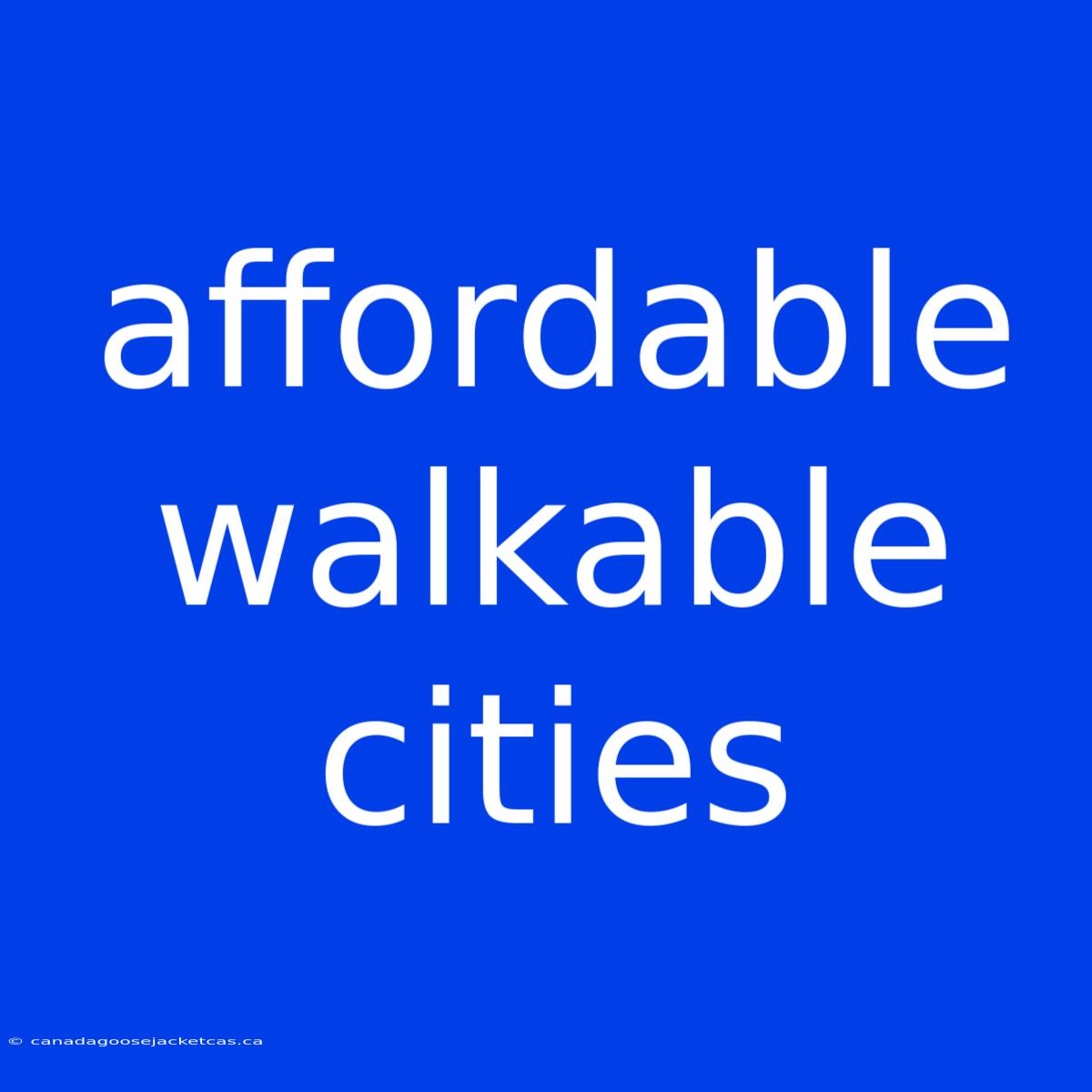Affordable Walkable Cities: Discover the Dream of Urban Living Without Breaking the Bank
Are you dreaming of an urban lifestyle, but worried about the cost? Affordable walkable cities offer a unique blend of urban amenities with attainable living costs. Editor Note: This guide delves into the characteristics of affordable walkable cities, their benefits, and how to find them.
Why are these cities so desirable? For starters, walkability reduces reliance on cars, cutting down on transportation costs and promoting a healthier lifestyle. Coupled with affordability, these cities provide a compelling option for those seeking to escape the high costs of major metropolises without sacrificing urban charm.
This guide explores the key aspects of affordable walkable cities, examining their features, benefits, and the factors that contribute to their affordability. We'll analyze data, explore examples, and provide insights to help you identify and choose the perfect city for your needs.
Key Features of Affordable Walkable Cities:
| Feature | Description |
|---|---|
| Walkability | High density of amenities within walking distance, reducing reliance on cars. |
| Affordability | Lower housing costs, transportation expenses, and overall cost of living. |
| Public Transit | Well-developed and accessible public transportation systems. |
| Amenities | Diverse range of restaurants, shops, cultural venues, and parks. |
| Safety | Safe and secure environment for walking and cycling. |
| Community | Strong sense of community and social interaction. |
Affordable Walkable Cities: Unlocking Urban Living
Walkability: Walkable cities are designed with pedestrian-friendly streets, sidewalks, and crosswalks. This encourages walking and cycling, promoting a healthier lifestyle and reducing reliance on cars.
Affordability: The affordability of these cities stems from factors such as lower housing costs, reduced transportation expenses, and overall lower cost of living.
Public Transit: Effective public transportation systems are crucial for accessibility and affordability. Well-maintained bus routes, light rail, and subway lines offer cost-effective alternatives to private vehicles.
Amenities: Affordable walkable cities often boast a diverse array of amenities, such as parks, cultural venues, restaurants, and shops, enhancing the quality of life for residents.
Safety: A safe environment is essential for a thriving walkable city. Well-lit streets, street cameras, and police presence create a sense of security for pedestrians and cyclists.
Community: These cities often have strong sense of community, fostering social interaction and a welcoming atmosphere for residents.
Exploring the Connection Between Affordability and Walkability
Affordability: The lower cost of living in these cities is driven by factors such as:
- Lower Housing Costs: Housing prices tend to be more affordable in walkable cities compared to large metropolises.
- Reduced Transportation Costs: Walkability and public transit options minimize reliance on cars, resulting in significant savings on transportation expenses.
- Access to Amenities: Having amenities within walking distance reduces the need for costly car ownership and parking.
Walkability: Walkable cities offer several advantages that contribute to their affordability, including:
- Reduced Transportation Costs: Walking and cycling are free modes of transportation, reducing fuel costs and vehicle maintenance.
- Healthier Lifestyle: Walking and cycling promote physical activity and can reduce healthcare costs in the long run.
- Reduced Environmental Impact: Walkable cities minimize reliance on cars, promoting sustainability and reducing greenhouse gas emissions.
Finding Your Perfect City
FAQ
- Q: What are some examples of affordable walkable cities?
- A: Examples include Asheville, NC; Burlington, VT; Boise, ID; and Portland, OR.
- Q: How can I find affordable walkable cities that fit my lifestyle?
- A: You can use online tools and resources, such as walk score and cost of living calculators.
- Q: Are there any drawbacks to living in affordable walkable cities?
- A: Limited job opportunities and a smaller range of amenities compared to major metropolises could be potential drawbacks.
Tips for Finding the Best Fit
- Consider your priorities: What are your most important factors? Walkability, affordability, job opportunities, or specific amenities?
- Research potential cities: Explore their walkability scores, cost of living, and available resources.
- Visit potential cities: Take a trip to get a feel for the local culture, amenities, and environment.
Conclusion: Embracing the Affordable Walkable City Lifestyle
Affordable walkable cities offer a unique blend of urban living and affordability, providing a compelling alternative to expensive metropolises. By prioritizing walkability, public transportation, and community, these cities create a vibrant and accessible environment for residents. Ultimately, choosing the right affordable walkable city depends on your individual needs and preferences.

